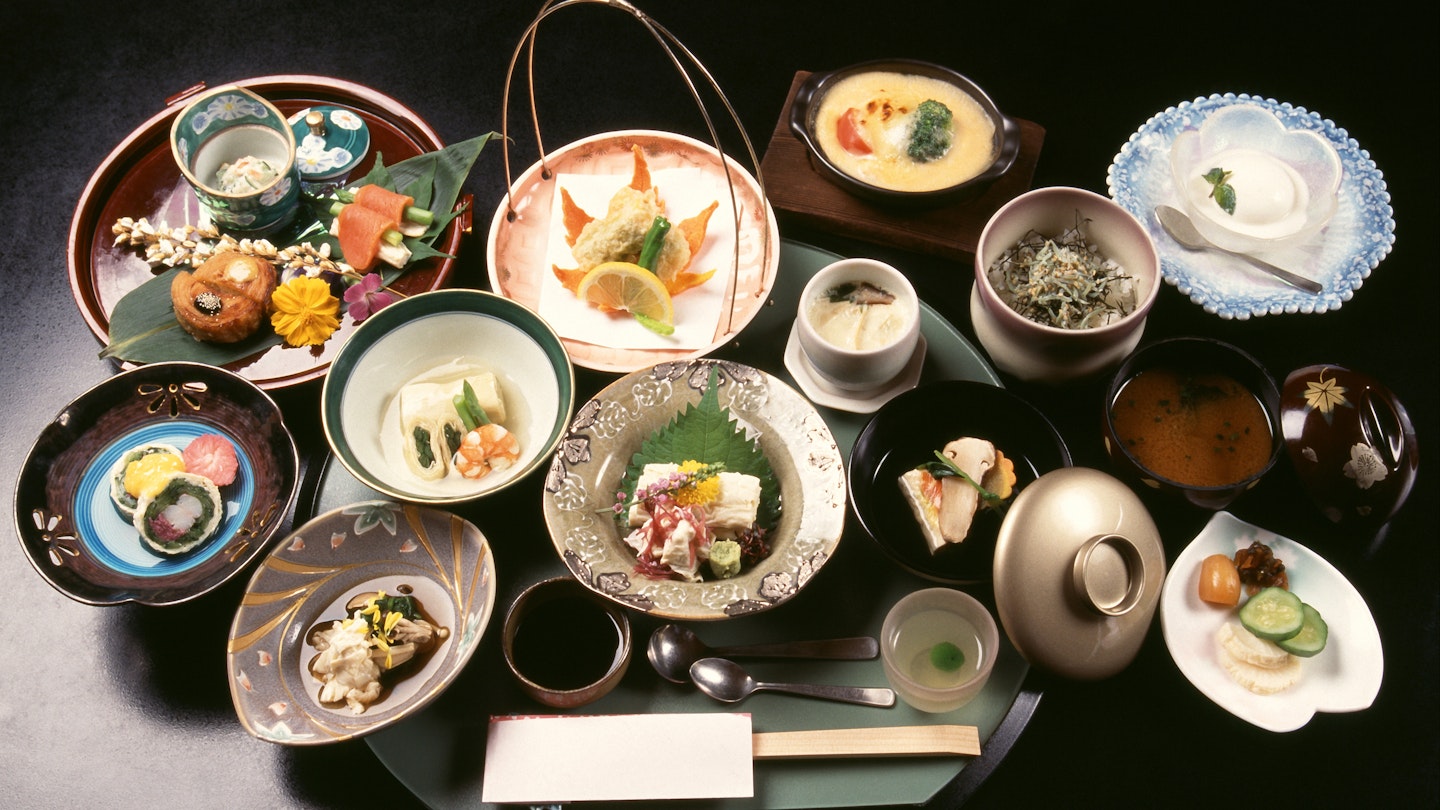The city of Kyoto is best known for its tranquil temples and picturesque shrines, but its rich history as Japan’s ancient capital has also left it with an elegant and refined culinary tradition that’s not to be missed.
Here’s our guide to the top Kyoto restaurants to visit and local dishes to try during your stay.
Indulge in Extravagant Kaiseki Ryōri
Kaiseki is Japan’s haute cuisine, a multi-course dining experience of the utmost sophistication. Each dish – and there can be upwards of 10 – is meticulously prepared and exquisitely presented, the result being more like a work of art than a meal. You can expect a wide range of local, seasonal, and traditional ingredients used.
Kaiseki meals are often included with stays at a ryokan (traditional Japanese inn), but there are plenty of restaurants in Kyoto where you can enjoy this elaborate fare, particularly in the Gion and Higashiyama areas.
- Try Hyōtei, which, at 400 years old, is an atmospheric Kyoto institution.
- Kyoto Kitcho Arashiyama offers gorgeous views of the gardens while you eat.
- For something more contemporary and affordable, visit Roan Kikunoi in the heart of Gion.

Enjoy High-End Plant-Based Dishes with a Shōjin Ryōri Meal
Vegetarians and vegans visiting Kyoto are in for a treat with the city’s other famous type of multi-course cuisine, shōjin-ryōri. This traditional Buddhist fare is just as beautiful and elegant as kaiseki but made without animal ingredients.
To experience it the proper way, go to a temple restaurant such as Shigetsu, which lies within the zen-like grounds of Tenryū-ji in the picturesque Arashiyama neighborhood. Menus cost between US$30 to US$70.
For modern vegan fare in the city, try Choice, which makes its own vegan cheese onsite, or Ain Soph Journey, renowned for its delicious pancakes made with matcha and vegan white chocolate.
Challenge Your Preconceptions with Innovative Tofu Dishes
Tofu is one of the city’s specialties, and you’ll be amazed at all the things chefs in Kyoto restaurants can do with this humble ingredient. Head to Junsei Shoin in the grounds of Nanzen-ji in the east of the city to sample yudōfu – soft squares of tofu simmered in broth – or yuba, tofu skin.
Many izakaya (traditional Japanese pubs) serve agedōfu (deep-fried tofu), perfect for pairing with a cold beer.

Dig into Local Delicacies at Nishiki Market
When it comes to street stalls, there’s no better place than Nishiki Market. Also known as Kyoto’s Kitchen, this narrow, traditional food market runs through the center of the city, offering a wide range of fresh local products. Try some of the samples, along with to-go street food like yakitori (grilled chicken) and mochi (sweet, sticky rice cakes).

Satisfy Your Sweet Tooth with Wagashi
Kyoto has some of the most delicate, exquisite, and adorable confectionery in the world. Kyo-wagashi are traditional Japanese sweets, originally served as part of the tea ceremony to offset the bitterness of matcha. Made using sweet bean paste, these sweets are hand-sculpted into seasonal flowers or cute characters.
Sweet shops can be found across the city. One of the best is Kagizen Yoshifusa in Gion, where you can enjoy authentic sweets for less than US$10.

Sip Sublime Green Tea
In Kyoto, tea and sweets are an unbeatable pairing. Just south of the city lies Uji, known across the country as one of Japan’s best producers of quality green tea. The city has numerous teahouses where you can attend a tea ceremony or simply enjoy a cup of matcha.
Raise a Toast with Local Sake
Kyoto’s other drink of choice is nihonshū, better known as sake. The city’s Fushimi district is one of the best producers of rice wine in Japan, home to around 40 sake breweries. Drop by the Gekkeikan Ōkura Sake Museum to learn more and sample some finished products.





